Related Research Articles
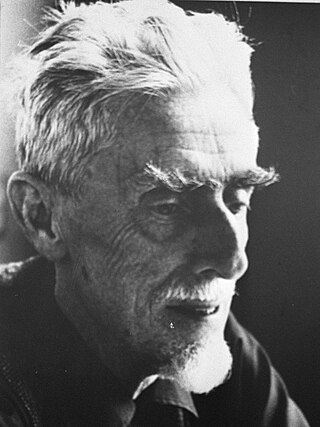
Maurits Cornelis Escher was a Dutch graphic artist who made woodcuts, lithographs, and mezzotints, many of which were inspired by mathematics. Despite wide popular interest, Escher was for most of his life neglected in the art world, even in his native Netherlands. He was 70 before a retrospective exhibition was held. In the late twentieth century, he became more widely appreciated, and in the twenty-first century he has been celebrated in exhibitions around the world.

Anders Leonard Zorn was a Swedish painter. He attained international success as a painter, sculptor, and etching artist. Among Zorn's portrait subjects include King Oscar II of Sweden and three American Presidents: Grover Cleveland, William H. Taft, and Theodore Roosevelt. At the end of his life, he established the Swedish literary Bellman Prize in 1920.
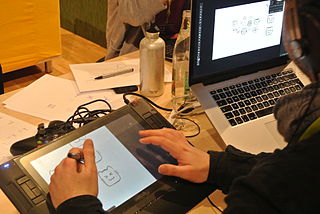
Digital painting is an established art medium that typically combines a computer, a graphics tablet, and software of choice. The artist uses painting and drawing with the stylus that comes with the graphics tablet to create 2D paintings within a digital art software. Digital artists utilize multiple techniques and tools, the main one being digital brushes. These come standard with all digital art programs, but users can create their own by altering their shape, texture, size, and transfer. Many of these brushes are created to represent traditional styles like oils, acrylics, pastels, charcoal, and airbrushing, but not all. Other effective tools include layers, lasso tools, shapes, and masks. Digital painting has evolved to not just mimic traditional art styles but fully become its technique.

Karel van Mander (I) or Carel van Mander I (May 1548 – 2 September 1606) was a Flemish painter, poet, art historian and art theoretician, who established himself in the Dutch Republic in the latter part of his life. He is mainly remembered as a biographer of Early Netherlandish painters and Northern Renaissance artists in his Schilder-boeck. As an artist and art theoretician he played a significant role in the spread and development of Northern Mannerism in the Dutch Republic.
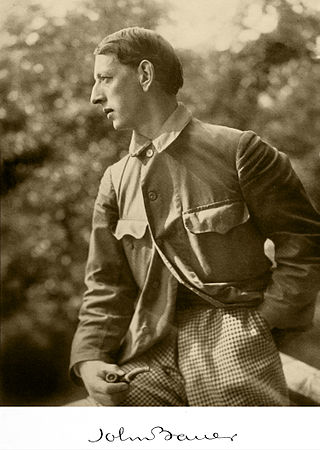
John Albert Bauer was a Swedish painter and illustrator. His work is concerned with landscape and mythology, but he also composed portraits. He is best known for his illustrations of early editions of Bland tomtar och troll, an anthology of Swedish folklore and fairy tales.

Neck Face is a graffiti artist known for a naïve and humorous style. His works have been shown in art galleries as well as on the streets.
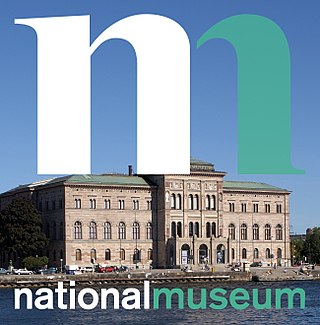
Nationalmuseum is the national gallery of Sweden, located on the peninsula Blasieholmen in central Stockholm.
Stephen Lawlor is an honours graduate of its National College of Art and Design from 1980-1983. During the 1980s he taught in Dún Laoghaire Institute of Art, Design and Technology Dublin, his work during this time was based on the figure of the horse which he developed through drawings etchings, lithographs and monotypes. An accomplished painter as well as a master printer, Lawlor has recently started to make sculpture in bronze. He has had solo shows in Ireland, England and the U.S.A. and has participated in numerous International Group exhibitions. His work is in private collections in the United States, Australia, The Far East and most of Europe.
Mark Manders is a Dutch artist, currently living and working in Ronse, Belgium. His work consists mainly of installations, drawings and sculptures. He is probably best known for his large bronze figures that look like rough-hewn, wet or peeling clay. Typical of his work is also the arrangement of random objects, such as tables, chairs, light bulbs, blankets and dead animals.

Chris Johanson is an American painter and street artist. He is a member of San Francisco's Mission School art movement.
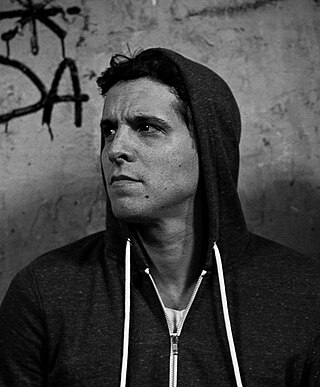
Shai Dahan is an American contemporary painter and street artist who works with painting, drawing, illustrations and sculptures.
Pharuephon "Tum" Mukdasanit, also known as "Mamafaka" (1978–2013), was a Thai graphic designer and street artist, best known as the creator of one of the most recognizable characters in Thai pop art: 'MR.HELLYEAH!' a hairy, one-eyed monster with a moustache which appeared on picture frames, paintings, T-shirts, shoes, skateboards, bags, furniture, iPhone cases, graffiti, and champagne bottles. His work also appeared on many local and international fashion and design magazines such as Wallpaper*, CG+ and Territory.
Don Pendleton is an American artist and designer. Pendleton is most widely recognized for the large body of skateboard graphics and for the artwork of Pearl Jam's tenth studio album, Lightning Bolt.
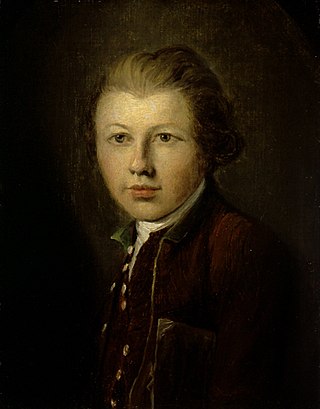
Johan Fredrik Martin was a Swedish painter and engraver of the eighteenth century. He worked in a variety of media, especially stipple, contour etching and aquatint.

Ata Bozaci is a Swiss graphic designer, illustrator and artist. His work encompasses drawing, painting, digital graphics, large-scale wallpainting and modular sculpture. From 1990 to 2012 his principle creative output was graffiti writing; he is known for graffiti works under the pseudonym Toast. People – man – are central to his recent digital works.
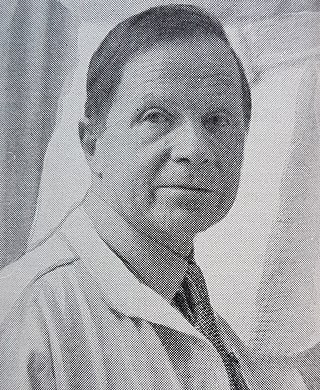
Johan (John) Anders Lundqvist was a Swedish sculptor.
Johan Erland Cullberg was a Swedish artist. He lived and worked in the city of Sollentuna, Sweden. He was the son of Eva Carin Maria Virgin and Bishop John Cullberg, a professor and theologian. His siblings are Johan Cullberg, professor, researcher and author of psychiatry, and Staffan Cullberg, former head of the Swedish National Arts Council.
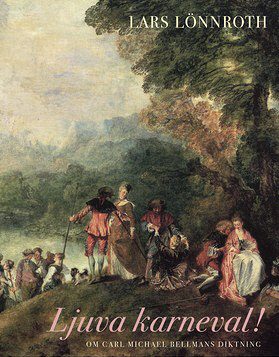
Ljuva karneval! is a 2005 book about the work of Sweden's national bard, the 18th century poet and performer Carl Michael Bellman, by the Swedish literary scholar Lars Lönnroth. Bellman is the central figure in Swedish song, known in particular for his 1790 collection, Fredman's Epistles. Lönnroth, who has studied Bellman since the 1960s, aims to give an overview of Bellman's work, describing the essence of Bellman's art: giving a frolicking one-man performance, religious or profane, through adapted tunes, imitated crowd sounds and speech in different languages, and songs in varied genres. He distinguishes carefully between the art and the person of Bellman, who in his view was by no means as drunken and debauched as the cast of his Epistles.
Mattias Adolfsson is a Swedish graphic artist and illustrator, known for his detailed and quirky drawings in ink and watercolor. He lives and works in Sigtuna, just outside of Stockholm, Sweden.
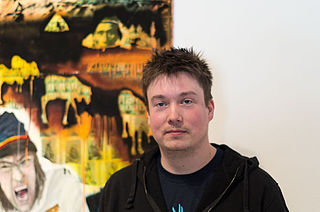
Börje Karl Anders Sunna is a Swedish Sámi artist known for incorporating a strong political point of view into his artwork. Sunna was born in the Jukkasjärvi parish of Kiruna, Norrbotten County, Sweden. He grew up in a reindeer herding family in Kieksiäisvaara near the border of Finland and was educated at Academy of Fine Arts, Umeå and the Konstfack University of Arts, Crafts and Design. Nowadays he lives in Jokkmokk, Sweden.
References
- 1 2 Tt, TT (13 October 2018). "Bokaktuell doldis syns överallt". Svenska Dagbladet (in Swedish). Archived from the original on 14 October 2018.
- 1 2 3 4 5 "Interview with Martin "Mander" Ander, a Artist and Professional Illustrator from Sweden". Good Day to Skateboards. 23 April 2021. Archived from the original on 27 August 2021.
- ↑ Almqvist, Björn (2018). Ouff! Mander Selected Works. Årsta: Dokument Press. p. 5. ISBN 978-91-88369-16-1.
- 1 2 3 Steiner, Leif; Potts, Emily (13 September 2016). "Martin Ander. Still Living the Punk Life". Moxie Sozo. Archived from the original on 27 August 2021.
- 1 2 3 4 "Mander At Teckningsmuseet". Teckningsmuseet. 2019. Archived from the original on 27 August 2021.
- ↑ "Martin Ander Portfolio". Illustratörcentrum. Archived from the original on 27 August 2021.
- ↑ "Martin Ander". kolla.se (in Swedish). Svenska Tecknare. 14 February 2020. Archived from the original on 27 November 2020.
- ↑ Loth, Alice; Widgren, Rickard (8 September 2019). "Anlitas av Netflix och internationella skateboardföretag – nu ställer han ut i Laholm". SVT Nyheter (in Swedish). Archived from the original on 15 September 2019.